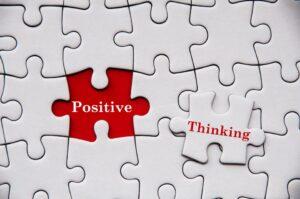The Science of Making Better Decisions:Heuristics and Biases
Decisions are a huge part of your everyday life, and the choices you make can significantly impact your personal and professional success. But let's face it, humans aren't always the best decision-makers. Even with all the information you need, your brain can still be swayed by cognitive biases and heuristics, affecting your judgement. Knowing about these biases and heuristics is key to making better, more informed decisions.
Decision-making science is a complicated, multi-disciplinary field that includes psychology, economics, neuroscience, and artificial intelligence. In this blog post, we'll delve into some of the major biases and heuristics that influence your choices, like confirmation bias, availability heuristic, and framing effect. We'll also explore how these mental shortcuts can impact your behaviour in various settings, from personal finance to social interactions.
By the end of this post, you'll have a better understanding of how your brain processes information and how this knowledge can help you make better decisions.
What is decision-making?
Decision-making is a mental process where you choose between different options based on criteria or preferences. It's a core part of human behaviour and is essential for achieving your goals in areas like your personal, social, and professional life. Decisions can be intentional or unintentional, rational or irrational, and can be influenced by external and internal factors, such as values, beliefs, emotions, and past experiences. The decision-making process involves steps like identifying the problem, gathering relevant information, evaluating alternatives, selecting the best option, implementing the decision, and reviewing the outcome. Different strategies, heuristics, and biases can impact the quality and accuracy of your decisions, leading to poor choices or mistakes. So, understanding the science of decision-making, including its underlying mechanisms, biases, and heuristics, is vital for improving your decision-making abilities and outcomes.
The two main types of heuristics
There are two primary categories of heuristics that people use to make decisions: availability and representativeness. Availability heuristics rely on how easily you can think of examples. If something comes to mind quickly, you're more likely to consider it when making decisions. This can be a handy shortcut, but it can also lead to errors when you rely too much on the most vivid or memorable examples. Representativeness heuristics, on the other hand, are based on how well something fits a particular stereotype or category. You may rely on inherent biases or stereotypes when making decisions, causing you to overlook important factors or make incorrect assumptions. It's important to be aware of these types of heuristics and their potential biases when making decisions, as they can affect the accuracy and effectiveness of your decision-making process.
The availability heuristic
The availability heuristic is a mental shortcut people often use when making decisions. It's based on the idea that you judge the likelihood of an event by how easily you can remember it. In other words, you tend to think that things that are more easily remembered are more common or more likely to happen than those that are harder to remember. This can lead to you overestimating the probability of rare or unlikely events, simply because they're more memorable than more common events. For example, you might be more afraid of flying than driving, even though driving is statistically much more dangerous, because plane crashes are more heavily reported in the media and easier to remember. The availability heuristic can be useful in certain situations, but it can also lead to biased thinking and poor decision-making if you don't take the time to objectively evaluate the information available to you.
the representativeness heuristic
The representativeness heuristic is a mental shortcut that helps you make judgments or decisions about unfamiliar people, objects, or events based on your existing mental prototype or stereotype of what you believe is typical or representative of that category. In other words, you tend to rely on the availability and prominence of certain features or characteristics that match your expectations, rather than on the actual probability or base rate. For example, you might assume that a person wearing a suit and tie is more likely to be a lawyer than a construction worker, or that a high-priced product is of better quality than a cheaper one. While this heuristic often saves you time and effort in processing information, it can also lead to errors in judgement and bias if you overlook the diversity and complexity of reality or cling too tightly to your mental models. To overcome this bias, try to gather more objective and diverse information, challenge your assumptions and stereotypes, and consider alternative explanations and possibilities.
What is the anchoring heuristic
The anchoring heuristic is a mental shortcut that explains the human tendency to rely heavily on the first piece of information encountered when making decisions. The anchor serves as a reference point, which can then influence subsequent judgments and choices. For example, when shopping for a new laptop, you might be more likely to purchase a model that is priced lower than other options, even if that lower price reflects a poorer quality product. This is because the lower price serves as an anchor for what you consider a reasonable cost for a laptop. The anchoring heuristic can be useful in certain situations, such as bargaining, but can also lead to biased decision-making when the anchor is not well-aligned with actual values or quality. By understanding the anchoring heuristic, you can become more mindful of how your initial perceptions may influence your judgments and can make more informed decisions by gathering multiple sources of information to create a more balanced perspective.
Confirmation bias
Confirmation bias is a widespread cognitive bias that can significantly impact the way we make decisions. It happens when you actively search for information that backs up your existing beliefs while disregarding any evidence that contradicts them. Confirmation bias can lead you to make decisions that aren't grounded in objective reality, resulting in flawed or incomplete conclusions. For instance, if you firmly believe that organic food is healthier, you might only look for information that supports this idea, while ignoring evidence that challenges it. Overcoming confirmation bias can be difficult since it often operates unconsciously, but being aware of it and actively seeking information that questions your beliefs can help reduce its influence on your decision-making.
Hindsight bias
Hindsight bias, also known as the "I-knew-it-all-along phenomenon," is a cognitive bias where you feel you predicted or foresaw an event after it has happened. This tendency relates to our brain's inclination to make sense of the past, making us believe that an event was more predictable and obvious than it genuinely was. Hindsight bias typically occurs when we try to explain why an event happened, and, because we already know the outcome, we perceive the event as more predictable than it was at the time. This bias can be especially harmful in decision-making since it can lead us to believe that we can predict the future with high accuracy, resulting in overconfidence and poor decision-making. Thus, it's vital to be aware of hindsight bias and actively work to minimise its impact on our decision-making processes.
Framing bias
Framing bias is a cognitive bias that occurs when you make decisions based on how information is presented, rather than the actual content of the information. In essence, framing bias influences your decisions based on the context or "frame" in which the information is shown. This can happen when you're exposed to different versions of the same information but presented in varying ways. For instance, a decision might be swayed by whether an outcome is framed as a gain or a loss, even though the actual outcome remains unchanged. Framing bias can be particularly troublesome when you're presented with incomplete, ambiguous, or misleading information. Understanding the potential for framing bias can help you make more informed and rational decisions by carefully evaluating the information presented.
Overconfidence bias
Overconfidence bias refers to the tendency to overestimate your abilities, knowledge, and control over situations. This can manifest in various ways, such as being overly optimistic about the outcome of a decision or task, underestimating the risks involved, or not gathering enough information and feedback to make an informed choice. Overconfidence bias can lead to poor decision-making, as it can make you more likely to take unnecessary risks or overlook critical aspects of a situation. It can also lead to a false sense of security and a lack of preparation for potential challenges or failures. Understanding and recognising this bias is crucial for making better decisions, as it can help you be more objective and realistic in your assessments and seek out diverse perspectives and feedback to reduce your blind spots.
Advantages of understanding heuristics and biases in decision-making
The capacity to make sound decisions is vital for success in both your personal and professional lives. However, humans aren't always rational and our brains are prone to various cognitive biases and heuristics that can result in poor decision-making. Grasping heuristics and biases is essential for enhancing our decision-making skills. In this section, we'll discuss 10 benefits of understanding heuristics and biases in decision-making. These benefits include increased awareness and mindfulness, improved problem-solving abilities, better critical thinking, more informed and objective decision-making, heightened creativity, the ability to manage emotions more effectively, greater adaptability, increased resilience, enhanced communication with others, and improved leadership capabilities. By understanding the science of decision-making, we can overcome the limitations of our cognitive biases and heuristics, leading to more effective decisions.

Using understanding of heuristics and biases to make the best decision
Understanding heuristics and biases is essential for making well-informed decisions. In this section, we'll explore some practical methods to leverage this knowledge and make the best possible decisions.
-
Challenge your assumptions: Recognise that your pre-existing beliefs and opinions may be influencing your decisions. Actively challenge these assumptions by seeking diverse perspectives, asking critical questions, and considering alternative explanations.
-
Slow down your decision-making: Avoid making snap judgments. Give yourself time to think through your options carefully, gather relevant information, and weigh the pros and cons of each choice.
-
Practice mindfulness: Cultivate a habit of mindfulness to become more aware of your cognitive processes and biases. Regularly reflecting on your thoughts, emotions, and actions can help you develop a greater understanding of your decision-making patterns.
-
Diversify your sources of information: Actively seek out information from a wide range of sources, including those with differing viewpoints. This helps to counteract confirmation bias and provides a more comprehensive picture of the situation at hand.
-
Use decision-making frameworks: Employ structured decision-making frameworks, such as the pros and cons list, decision trees, or SWOT analysis, to help organise your thoughts and make more objective decisions.
-
Seek feedback from others: Consult with others who have different perspectives, experiences, or expertise. Their input can help you identify potential blind spots, biases, and alternative options.
-
Conduct a pre-mortem: Before making a decision, imagine that your choice has failed and consider the possible reasons for the failure. This exercise can help you identify potential issues and biases that may have been overlooked.
-
Be aware of the framing effect: When presented with information, consider how it's framed and if there are alternative ways to present the same data. This can help you avoid making decisions based solely on how the information is presented.
-
Embrace uncertainty: Accept that uncertainty is a natural part of decision-making. Strive to make the best decision with the information available, while acknowledging that new information may arise that could change your perspective.
- Reflect on past decisions: Regularly review past decisions and their outcomes to identify patterns of biases, heuristics, and other factors that may have influenced your choices. Use these insights to improve your future decision-making processes.
By applying these methods and continually learning about heuristics and biases, you'll be better equipped to make well-informed, rational decisions that are more likely to result in favourable outcomes for your personal and professional life.
Using decision making frameworks
Decision-making frameworks are structured methods that help organise your thoughts, evaluate options, and make more objective and informed decisions. These frameworks can be particularly useful in reducing the impact of heuristics and biases on your decision-making process. Here are a few popular decision-making frameworks to consider:
-
Pros and Cons List: One of the simplest and most commonly used decision-making frameworks is creating a list of pros and cons for each option. This method involves identifying the advantages (pros) and disadvantages (cons) associated with each alternative and then weighing them against one another to determine the best course of action.
-
Decision Matrix: A decision matrix is a more quantitative approach to evaluating options. It involves defining a set of criteria that are important for the decision, assigning weights to each criterion based on their relative importance, and scoring each option against these criteria. The scores are then multiplied by the weights, and the option with the highest total score is chosen.
-
SWOT Analysis: SWOT stands for Strengths, Weaknesses, Opportunities, and Threats. This framework is typically used for strategic planning but can also be adapted for decision-making. It involves evaluating each option based on its internal strengths and weaknesses, as well as external opportunities and threats. This helps identify the most promising options and any potential challenges that may need to be addressed.
-
Cost-Benefit Analysis: This framework is used to compare the costs and benefits associated with each option. It involves estimating the total costs (financial, time, resources, etc.) and benefits (revenues, savings, improvements, etc.) for each alternative, and then selecting the one with the highest net benefit (total benefits minus total costs).
-
Decision Trees: A decision tree is a graphical representation of possible outcomes and decisions. It helps visualise the different paths that a decision could take, along with the associated probabilities, costs, and benefits. By working through the tree, you can identify the most favourable option based on the expected value of each path.
-
Multi-Criteria Decision Analysis (MCDA): MCDA is an advanced decision-making framework that takes into account multiple criteria and the preferences of the decision-maker. It involves defining a set of criteria, assigning weights to each criterion based on their importance, and scoring each option against these criteria. The scores are then aggregated using mathematical techniques to rank the options and identify the best one.
- Delphi Technique: The Delphi technique is a structured method for gathering expert opinions and reaching a consensus on a decision. It involves a series of anonymous questionnaires or surveys, where experts provide their input on the decision at hand. The responses are then summarised, and the process is repeated until a consensus is reached.
These decision-making frameworks can help you systematically evaluate your options and make more informed, objective decisions. By using these frameworks, you can reduce the impact of heuristics and biases on your decision-making process and increase the likelihood of making the best possible choice.
Summing Up
In summary, comprehending heuristics and biases can help us make better decisions and avoid common pitfalls. By being aware of how our brains process information and the shortcuts we use, we can be more intentional in our decision-making process and ultimately make smarter choices. As we continue to learn more about the science of decision-making, we can apply this knowledge in our personal and professional lives to achieve greater success and satisfaction.

Daniel Kahneman: Thinking, Fast and Slow -
Richard H. Thaler and Cass R. Sunstein: Nudge: Improving Decisions About Health, Wealth, and Happiness -
Dan Ariely: Predictably Irrational: The Hidden Forces That Shape Our Decisions -
More Posts for Excellent Mindset
Semantically Related Posts
Awareness: Familiarise yourself with common heuristics and biases and stay informed about new research in the field of decision-making. This will help you recognise potential pitfalls in your thinking and decision-making process.
Reflection: Regularly reflect on your past decisions, considering any biases that may have influenced your choices. Learn from your experiences, and use that knowledge to improve your future decision-making.
Critical thinking: Develop your critical thinking skills by questioning your assumptions, evaluating the evidence, and considering alternative explanations. This will help you make more objective decisions, reducing the influence of biases.
Diverse perspectives: Seek input from others with diverse perspectives and backgrounds. This can help you identify blind spots and consider new ideas, leading to more informed decisions.
Use decision-making frameworks: Utilise decision-making frameworks, as mentioned in the article, to structure your thought process and make more objective choices.
Mindfulness: Practise mindfulness and self-awareness to stay present in the moment, which can help you notice when your thinking is influenced by biases.
Slow down: When making important decisions, take your time to evaluate your options carefully. Slowing down can help you recognise biases and avoid making impulsive or emotionally driven choices.
Pause and question: Before committing to a decision, pause and ask yourself questions like, "Am I being influenced by a bias?," "Am I only focusing on information that confirms my beliefs?," or "Have I considered all the relevant factors?"
Develop a bias-checklist: Create a list of common biases and review it when making decisions. This can help you become more familiar with the biases and remind you to be vigilant for their influence.
Educate: Provide training and resources on cognitive biases and decision-making strategies for your team members. This will help them understand the potential pitfalls and develop the skills to make more informed choices.
Encourage diversity: Promote diversity in your team, both in terms of backgrounds and perspectives. Diverse viewpoints can help uncover biases and lead to more balanced decision-making.
Foster open communication: Create a safe space for team members to share their thoughts, ideas, and concerns. Encourage respectful debate and constructive feedback, which can help identify biases and improve decision-making.
Implement decision-making frameworks: Introduce and encourage the use of structured decision-making frameworks within your organisation. These frameworks can help reduce biases and ensure more objective decision-making.
Review and learn: Regularly review past decisions as a team, discussing any biases that may have influenced the outcomes. Use these insights to improve future decision-making and continually refine your team's approach.
 | Breathing Your Way to Better Life: The Powerful Benefits of Deep Breathing | The Art of Study: How to Maximise Your Learning Efficiency |  |















